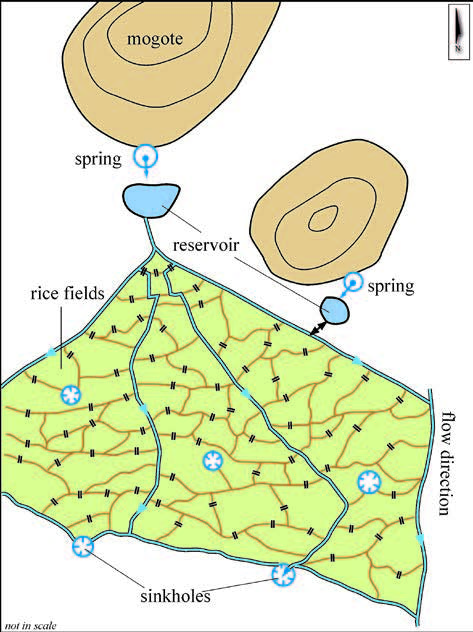A Mysterious Karst: the “Chocolate Hills” of Bohol (Philippines)
DOI:
https://doi.org/10.3986/ac.v40i3.3Povzetek
A public showcase by the Philippine tourism authorities, and rightly so, are the “Chocolate Hills” of Bohol (Philippines), the strangest karst landform known. These numerous residual relief forms are so perfectly symmetrical that, in order to explain their existence, natural explanations are systematically sidelined by legends, myths and many so-called “scientific” explanations. The object of many television broadcasts related to travel, these karst hills are a particularly original example of mogotes tropical karst; their almost “perfect” aspect had intrigued those who have studied their formation and have given birth to many hypotheses. The genesis of the “Chocolate Hills” is due to the emergence of the Pliocene limestone coralline platform, then to its karstification in a particularly homogeneous tropical climate conditions: rainfall, temperature, wind, pedologic and vegetable covers. In other aspects, their good overall porosity explains their mass impregnation by the runoffs as well as the appearance of important aquifers, exploited for the development of irrigated rice fields. Karst models are present, notably the caves and underground networks of which very few have been explored. Finally this original context (insularity, virgin tropical forest undisturbed for a long time) permitted the sustainability of a particularly original endemic fauna including the famous Bohol tarsier. In June 1998 the “Chocolate Hills” were declared the National Geologic Monument and this national park definitely merits a visit.Prenosi
Podatki o prenosih še niso na voljo.

Prenosi
Objavljeno
2011-12-28
Kako citirati
Salomon, J. N. (2011). A Mysterious Karst: the “Chocolate Hills” of Bohol (Philippines). Acta Carsologica, 40(3). https://doi.org/10.3986/ac.v40i3.3
Številka
Rubrike
Original papers
Licenca
Avtorji jamčijo, da je delo njihova avtorska stvaritev, da v njem niso kršene avtorske pravice tretjih oseb ali kake druge pravice. V primeru zahtevkov tretjih oseb se avtorji zavezujejo, da bodo varovali interese založnika ter da bodo povrnili morebitno škodo.
Podrobneje v rubriki: Prispevki




